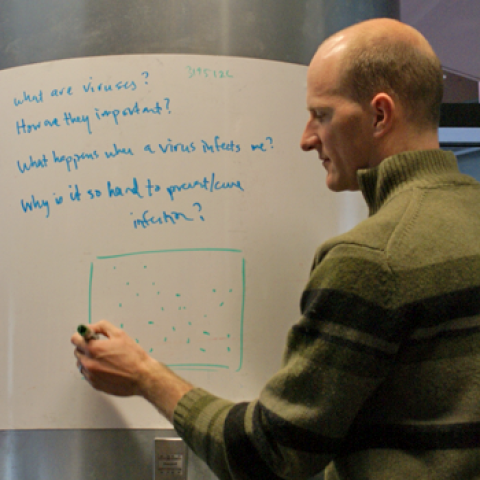Interdisciplinary Initiatives Program Round 5 – 2010
Karla Kirkegaard, Microbiology & Immunology
Markus Covert, Bioengineering
How do viruses and other pathogens spread from cell to cell and why does it matter? Traditionally, there have been two classifications of viruses with respect to spread: lytic and non-lytic. Reality, of course, is much more variable and nuanced. With support from the Bio-X program at Stanford in 2010 and 2011, we have been developing metrics and models to investigate the parameters of virus spread for a classically lytic virus: poliovirus. Using cell culture systems and viruses developed in the Kirkegaard laboratory and quantitative image analysis developed in the Covert laboratory, we have accumulated evidence that “lytic’ viruses can LEAK from cell to cell without disrupting cellular integrity. This leakage requires the cellular process of autophagy. We have found that small molecules that enhance this process enhance virus spread, and are in the process of testing the effect of inhibitors of autophagy. Our finding that the spread of viruses can depend on a pharmaceutically controllabe cellular process may lead to the development of medicines that either inhibit autophagy, to slow virus spread, or enhance it, so that viruses in ‘hiding’ can be recognized and destroyed by the immune system. We are very grateful for this support from BioX, which has made this collaboration possible through support of both laboratories.



